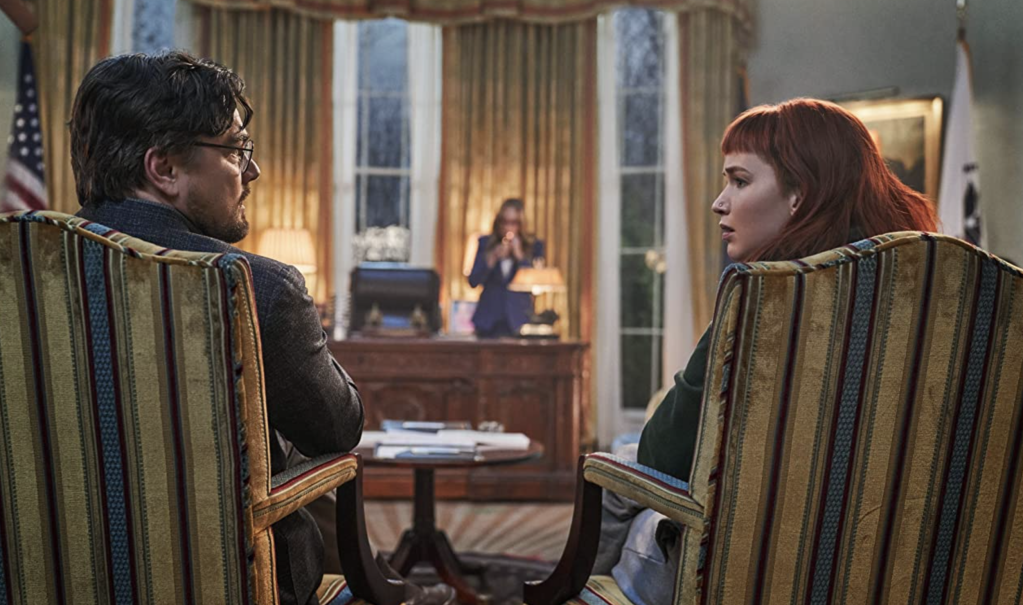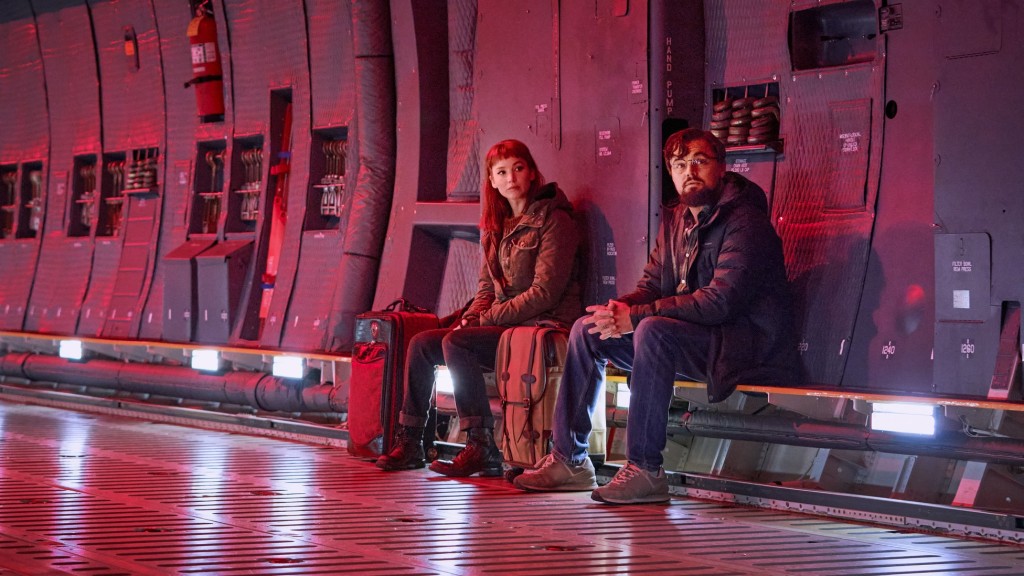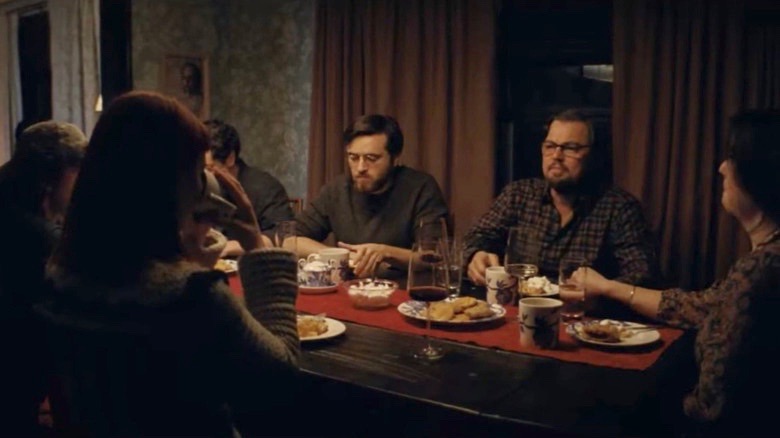
“What is difficult is to advance into unknown lands,
to be aware of the danger,
to take risks, to be afraid.”
— Jean-Luc Godard
On the afternoon that Columbia sophomore Phillip Lopate was released from the hospital after a suicide attempt, his brother picked him up, and they immediately headed downtown to catch a terrific double bill at the Bleecker Street Cinema in New York’s lower East Side: Renoir’s Grand Illusion and Kubrick’s Paths of Glory. It was the early 1960s. In those days, films were not available on demand, anywhere, anytime. You had to keep watch for their brief appearance at a local cinema and seize the moment. When the Lopate brothers emerged from the double bill, they weren’t done. “Still movie-hungry after a two-week drought,” Phillip later wrote, “I insisted that we race uptown to see Zazie dans le Metro.… What an orgy! I had gotten suicide out of my system but not cinema.” [i]
I was born 8 months after Lopate, so I too was an impressionable young man in what he calls the “heroic” age of filmmaking, when we were all falling in love with the revelatory perspectives and styles of world cinema: Eisenstein, Kurosawa, Ray, Fellini, Antonioni, Renoir, Bresson, Truffaut, and so many others. Movies mattered then in a way they no longer do. It always seemed a privilege and a thrill to catch a rare screening at an art house, or in some packed campus room with a 16mm print chugging its way through a portable projector, then talk endlessly about it afterward.
This week, Jean-Luc Godard, one of the last pioneers of that heroic age, departed this world at age 91. His first film, Breathless (1960), would be a revolutionary turning point in film history, exploding narrative traditions and production practices to open radically fresh understandings of what we expect of cinema, and what cinema expects of us. For the next seven years, Godard would make fifteen extraordinary films which broke old rules—even his own—to explore countless new possibilities. I have five of those films in my library, and yesterday I paid my respects by watching all of them in chronological order, plus some of the commentaries and interviews on the discs. I started at 10 a.m. and finished 14 hours later. Let me share something of what I saw.
Breathless (1960)
This was Godard’s first work, shot on location in Paris in documentary style, with handheld cameras and available lighting, liberating filmmaking from large crews, unwieldy equipment and stagey sets. It’s both fragmented and frenetic, full of joyous and jazzy energy. It jumps around in time and space, omitting many of the images and sounds thought necessary for visual and aural continuity. For example, when small-time hoodlum Michel (Jean-Paul Belmondo) shoots a pursuing policeman, we don’t see him aim, or get any realistic sense of the spatial environment. We see a close-up of the gun, we hear a shot, we see the policeman fall. We know a killing just happened, but we don’t quite know how or why.
Godard’s other fragmenting techniques include music which suddenly starts or stops in ways disconnected from the action on screen. Or diegetic (natural) sounds of street or café suddenly cease, as if we are watching a silent movie. Such devices prevent us from getting so caught up in the narrative flow that we forget we are watching a movie. In a later work, a character would ask, “How did I get into this film?” Godard wanted us to reflect on the differences between art and life, representation and reality. When we are totally enthralled by the narrative flow, lost in the illusion, thinking gets suspended.
Throughout Godard’s early films, there are numerous references to both high culture—Mozart on a turntable, an art poster on the wall, a book read out loud—and pop culture—music, billboards, cars, newspapers, and, of course, movies. Characters go to the cinema or stroll under marquees displaying a relevant film title. When Belmondo saunters past a poster for Robert Aldrich’s Ten Seconds to Hell, it seems to announce Michel’s own rush toward doom.
Criterion’s trailer gives a nice sense of the film in a minute and a half:
There is a story, of sorts. Two stories, actually: a crime story, with Michel on the run from the law, and a love story, where he and Patricia (Jean Seberg), a young American in Paris, try to figure out whether they are in love. However, the two stories never quite intertwine. Unlike film noir, the love story doesn’t precipitate the crime story. And the narrative remains subordinate to Godard’s real interest: how do Belmondo and Seberg look while they are doing mostly ordinary things? What do we feel as we watch them? The camera never gets tired of their faces, nor do we.

But can we ever get beyond the surface to see their inner life? Belmondo does confess his own exhaustion. Mentally, spiritually, he is out of breath. “I’m sick of it all,” he tells his lover. “I’m tired. I want to sleep.” The police oblige by shooting him as he runs down the street. Patricia gets there in time to watch him die. But we’re not sure what’s going on inside her either. In the film’s final shot, she turns to look directly at us (another rule broken!), as if to ask, What do you make of this movie? What do you make of me? Then she turns her face away from the camera, showing us only the back of her head as the film fades to black.
Had Breathless been made five years earlier, critics and audiences might have dismissed it as a confusing mess. But at the outset of the Sixties, it struck the nerve of the emerging Zeitgeist. It was not only a big hit; it had a lasting effect on the future of cinema. But for his second film, instead of repeating his success in a formulaic way, Godard pushed the boundaries again, choosing a topic so controversial that his film would be banned in France for nearly three years.
Le Petit Soldat (1960, released 1963)
When Godard made this film, the Algerian struggle for independence was tearing France apart. By 1960 popular opinion was turning against colonialism and the brutality that sustained it, but right-wing French nationalists and Algerian terrorists continued a clandestine war on French soil. I myself was in Paris during a 1961 bomb threat. Police were everywhere. People were on edge, like America today. When Godard finished his film, showing both sides in a poor light, the French government suppressed it.
While Godard continued the fragmented style of Breathless in his second film, he added a political dimension which would become a signature element in his work. Godard wasn’t sure what his own politics were in the Algerian struggle, and his protagonist Bruno is equally confused. Recruited by the nationalists, he refuses to perform an assassination. He can’t give them a specific reason. He just doesn’t feel like killing. When he’s captured by Algerian terrorists and tortured for information, he resists them as well. “Why didn’t I give them the phone number?” he wonders later. “I can’t recall.”
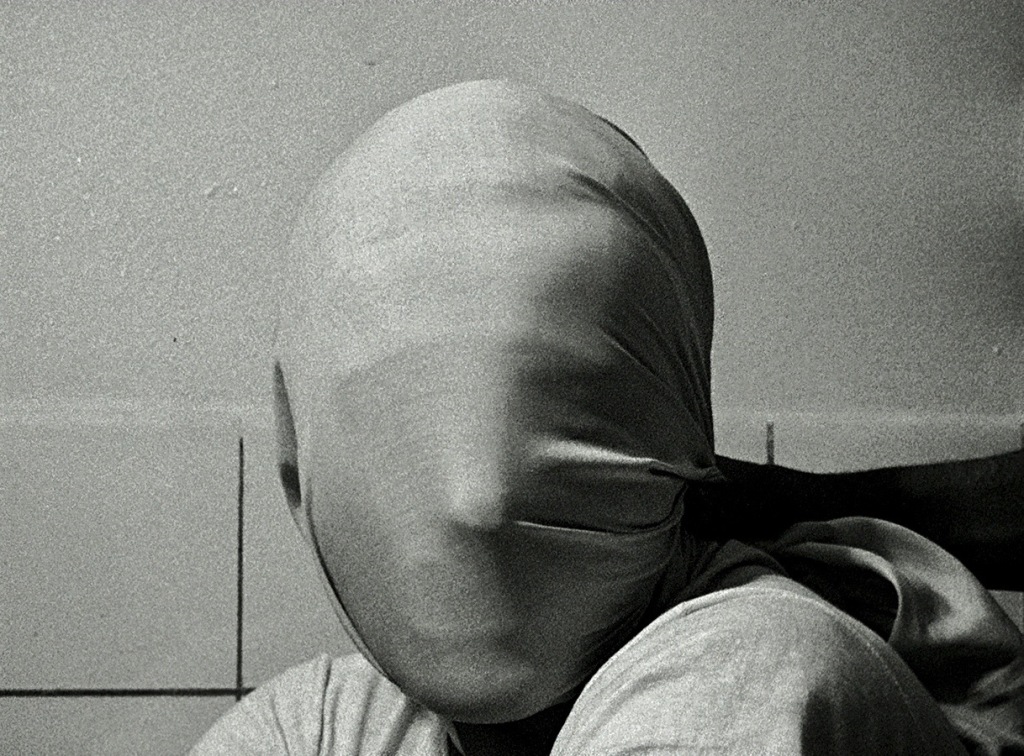
The torture scene is very Godardian in its avoidance of emotional effects, allowing us to think even as we watch various waterboarding techniques. There’s no blood, no screaming that we hear, no anguished face (we only see Bruno face down in the bathwater, or covered with a hood). What we do get is Bruno’s strangely dispassionate thoughts, as though there is a part of him they cannot touch: “Torture is so monotonous and sad.… Between torture sessions, we had great political discussion. They said I was an idiot with no ideals.” The most horrifying portions of the sequence are the cutaway shots of a woman in the next room, calmly reading Mao and Marx at her desk while her comrades do their worst behind closed doors. For her, it’s just a boring job.
In some sense, Le Petit Soldat is about trying to think clearly when confusion reigns. Philosophy was a passion for Godard, and he wasn’t afraid to insert large doses of it into his films. “We do things without conviction,” Bruno laments in a monologue to his lover. “We no longer know where to love.… There’s something more important than ideals—but what? There’s something more important than not being conquered. I wish I knew what, exactly.… Where does speech come from? Maybe people talk endlessly like goldminers, looking for the truth. But instead of digging in rivers, they dig in their own thoughts. They eliminate words of no value, and end up finding one, just one, just one golden one, and already all is silence.”
Vivre sa vie (1962)
This film, Godard said, is about a woman who “sells her body but keeps her soul.” Unable to make ends meet, Nana (Anna Karina), spirals downward into a life of prostitution. But the commodification of her body, while evoking our empathy, is outshone by an expressive presence which burns brightly on the screen. As one critic has noted, “Karina remains one of cinema’s greatest presences.… You don’t watch Karina, or absorb her uncanny relationship with Godard’s camera,” in order to see her fictional character, “but for herself, alive and captured in the filmmaking moment, as in amber.” [ii] It’s no surprise to learn that Godard married her.
Just before Nana takes up her sad vocation, she spends her last few francs to see Carl Dreyer’s classic silent film about another woman ill-treated by the world of men: The Passion of Joan of Arc. The martyred saint is portrayed by one of cinema’s greatest faces, Renée Falconetti. In a pitch-dark theater, we see Joan’s face, on the verge of tears during her trial, then we see Nana’s face as her own tears flow. In this celebrated scene, the two women become one in their beauty and in their suffering. [iii]
Later in the film we find Nana striking up a conversation in a café with a man at the next table. He turns out not to be her next customer, but a well-known French philosopher (Brice Parain, playing himself). It’s a perfect opportunity for Godard to engage us with some of his key themes.
“We must think, and for thought we need words,” Parain tells Nana. “There’s no other way to think. To communicate, one must speak. That’s our life.… Speaking is almost a resurrection in relation to life. Speaking is a different life from when one does not speak. So to live speaking, one must pass through the death of life without speaking.… From everyday life one rises to a life—let’s call it superior—why not? It’s the thinking life. But the thinking life presupposes that one has killed off a life that’s too mundane, too rudimentary.… I don’t think one can distinguish a thought from the words that express it. A moment of thought can only be grasped through words.”

For a moment during this discourse, Nana turns to the camera, gazing at the viewer as if to say, “Are you getting this?” When Parain pauses, she asks him, “What do you think about love?” Without answering directly—love being a mystery—he reflects that thinking is performed by embodied, relational beings, each with their own incomplete perspectives. Therefore, in the collective pursuit of truth, error is an inevitable part of the process. “One thinks with the constraints and errors of life,” he tells her. “We must pass through error to arrive at the truth.”
Masculin féminin (1966)
Among this film’s frequent intertitles, interrupting the narrative to deliver a message, is one that reads: This film could be called “The Children of Marx and Coca-Cola.” Let them understand who will.

It’s 1965. Not much happens in the way of story. We hang out for 104 minutes with five young people in Paris. They have some good times. They pursue relationships, or fail to. They try out different poses as they figure out how to present themselves to the world. They read, go to the movies, strive to speak interestingly about ideas, the arts, politics, sex, whatever. They are still rather unformed, lacking the depth that comes with age and experience. But they all have their measure of charm. But there is a lostness about them as well. The film’s last line is spoken by a young woman, Madeleine, who is asked about her plans in the wake of a sudden tragic loss. After a long, reflective pause, she can only say, “I’m not sure … I’m not sure.”
Here are all the Godardian touches: disconnected moments rather than a continuous narrative; spontaneous—and sometimes awkward—interviews with the characters, who do not know the questions beforehand; fascination with pop culture (one of the leads, Chantal Goya, was beginning her successful singing career in real life); literary recitations; a mixture of different cinematic styles and camera techniques; and a quirky soundtrack, with random audio interjections by music, street noise, silence, and even gunshots.
Jean-Pierre Léaud, who plays Paul, is 21 years old in the film. That’s how old I was in 1965, so the innocence, the folly, the experiments in self-representation all resonate with me, as does the cultural energy that was in the air. It was an exhilarating time to come of age. As for the painfully archaic gender stereotyping in Masculin féminin, I do hope that’s not exactly the way we were.
I tend not to remember the hard parts, so, much as I love Léaud’s work, I can’t entirely identify with the “Paul” described by critic Claude Mauriac: “the image of the young man for all times—nervous, worried, unhappy, despondent.” I remember being happy. Mauriac, uncle to Godard’s second wife, thought he saw something of the filmmaker himself in Léaud’s character.
Weekend (1967)
This apocalyptic “comedy” (as many laughs as Dante’s Inferno!) is crammed with multiple layers of meanings, parables, visual jokes, film references, appearances by characters from literature and history, recitations of political, poetical, and philosophical texts, and pretty much no one to like. A heady blend of Alice in Wonderland, the Wizard of Oz, Karl Marx, Bertolt Brecht and Hieronymus Bosch, Weekend images the unraveling of the social contract and the collapse of Western civilization, all during a weekend in the country.
The opening credits include two separate intertitles, warning the viewer to proceed with caution:
A FILM ADRIFT IN THE COSMOS
A FILM FOUND IN A DUMP
Corrine and Roland leave Paris for the weekend, with the goal of murdering her mother for the inheritance. Along the way they encounter the worst traffic jam ever, shown car by car in one of the longest tracking shots in film history (a brilliant must-see!). After that they begin to find clusters of wrecked and burning cars, with dead bodies scattered around—an excruciating metaphor for the Vietnam War.
As their iniquitous quest continues, they encounter various odd characters, including a self-professed son of God (they pester him for some miracles—A big Mercedes sports car? An Yves St. Laurent evening dress? A Miami Beach hotel? Make me a natural blonde?—but such desires are judged too banal, and their wishes are denied); two sanitation workers who face the camera on their lunch break to recite dour texts on oppression and revolution by Frantz Fanon, Stokely Carmichael, and Friedrich Engels (critics at the time advised going to the lobby for coffee during this interminable interlude); and Emily Brontë and Tom Thumb, wandering whimsically through the forest like characters in Wonderland, incapable of giving useful answers:
Roland: “Which way is Oinville?”
Emily: “Poetical information or physical information?”
Roland: “Which way to Oinville?”
Corrine: “This way or that way?”
Emily: “Physics does not yet exist, only individual physical sciences, maybe.”
Roland: “What a rotten film. All we meet are crazy people.”
Frustrated, Roland sets fire to Emily’s 19th-century dress. Corinne watches pensively as Emily is consumed by flames.
Corrine: “It’s rotten of us, isn’t it? We have no right to burn even a philosopher.”
Roland: “Can’t you see they’re only imaginary characters?”
Corrine: “Why is she crying, then?”
Roland: “No idea.”
In the end, Corrine and Roland fall into the hands of long-haired guerillas with guns, who survive in the wild as cannibals, cooking and eating the weekend tourist trade. Their motto: “The horror of the bourgeoisie can only be overcome with more horror.” Don’t expect a happy ending.
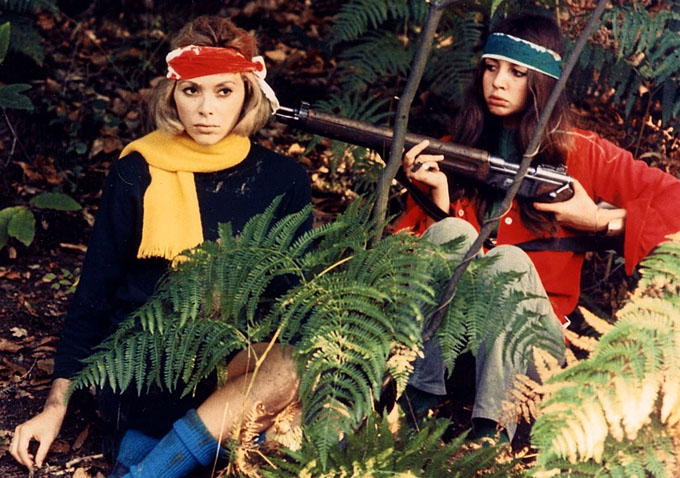
Weekend is a hell of a ride. When it had its American release in the fall of 1968, our nation was experiencing its own apocalypse. I found the film cathartically funny and stunningly inventive at the time. But after my recent midnight screening, I was gasping for air, like Dante emerging from the Inferno’s suffocation, desperate to return to the open air beneath the stars. András Bálint Kovács says Godard intended his film to be grueling:
“In addition to providing a picture of the underlying violence in human relations in society and creating a form that does not let the viewer forget that she is watching a film, Godard’s goal was also to eliminate everything that conventionally provides the viewer with the comfort of watching a film.… Godard wanted the act of watching his film to be as painful as participating in the reality depicted would have been: ‘By Weekend I wanted to represent monsters in a monstrous film—a film that is a monster itself.’” [iv]
After its French premiere, people thought Godard had gone too far past reality with his imagined chaos and violence. A few months later, 1968 arrived, and the movie suddenly made more sense. When the word “Fin” (The End) comes on after Weekend’s final scene, “de cinema” is added underneath: The End of Cinema. And with that, Godard’s greatest period comes to a close. He would continue to explore and push boundaries without compromise for another 50 years, but for the most part his audience didn’t come with him. His penultimate production was called Goodbye to Language (2014). With regard to accessible cinema, he had been saying goodbye for decades.
I will always be grateful for what Godard gave us—so many marvelous moments and indelible images. Like countless others, I often borrowed his ideas for my own films (although my characters were more likely to recite from St. John of the Cross than Karl Marx). But after fourteen hours submerged in these five iconic works, I found myself, like Michel in Breathless, exhausted. I just wanted to sleep.
Perhaps I no longer have the stamina for marathon screenings. But when I finished the fifth film at 2 a.m., I also felt dispirited by the absence of God in Godard. I do believe, as the Psalmist says, that “even if I make my bed in hell,” God is yet there (Psalm 139:7). And I know that part of the spiritual work of repairing the world involves looking at alienation and suffering with unflinching eyes, and finding grace in unexpected places. But while Godard is a reliable guide through the Inferno, and even through much of Purgatorio, he stops well short of Paradiso. For that I need another guide, someone like Robert Bresson, whose films, even the ones about suicide, always leave me in a state of prayer.
Still, with immense gratitude and respect, if not exactly love, I give Jean-Luc the last word:
“This wasn’t the film we’d dreamed of. This wasn’t the total film that each of us carried within himself … The film that we wanted to make, or, more secretly, no doubt, that we wanted to live.” [v]
[i] Phillip Lopate, “Anticipation of La Notte: The ‘Heroic’ Age of Filmmaking,” Against Joie de Vivre (New York: Poseidon Press, 1989), 124.
[ii] Michael Atkinson, “The Lost Girl,” in the booklet for Criterion’s Blu Ray disc (2010), p. 20. The Criterion discs of Godard films are superb.
[iii] In this scene, the only sympathetic priest (played by Antonin Artaud,the avant-garde genius of French theater in the mid-20th century) asks her questions: “How can you still believe you were sent by God?” (“God knows our path,” she replies, “but we understand it only at the end of our road.”) “Are you a child of God?” (“Yes, I am God’s child.”) “And the great victory?” (“It will be my martyrdom.”) “And your deliverance?” (“Death!”). These words could belong to Nana as well.
[iv] András Bálint Kovács, Screening Modernism: European Art Cinema, 1950-1980 (Chicago: The University of Chicago Press, 2007), 336-337.
[v] In Masculin féminin, Paul thinks these words as he watches a film in a movie theater with his friends.


